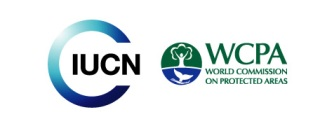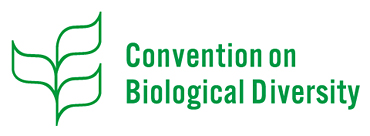PDF: Tourism Planning in Development Cooperation: A Handbook
Citation
GIZ. (2014). Tourism planning in development cooperation: A handbook. Deutsche Gesellschaft für Internationale Zusammenarbeit (GIZ).
Download PDF
Summary
More than twenty years have passed since the second global UN Conference on Environment and Development in Rio de Janeiro in 1992 (commonly known as the Rio Conference), which attracted a host of international attendees. The focus of the debate was on the term ‘sustainable development’, which, after the conference was over, would later create quite a stir worldwide, as the key idea behind a new perception of development. This key idea was inspired by the realization that economic efficiency, social justice and the preservation of natural resources that are vital to the livelihoods of people are interests which deserve equal consideration
and complement one another. Thus, in keeping with the key idea of sustainable development, the goal is to find a sustainable balance between economic, ecological
and social needs that arises in connection with economic development – a goal that has also been a top priority of German development cooperation for many years.
If we look at the tourism industry and how it has developed in the past two decades, we see that it has become one of the largest economic sectors by size and revenue in the world. During this period, tourism suddenly became a major economic factor, especially for developing countries. In 1978, 27.3 million arrivals were recorded in developing countries; by 1998, the number of arrivals had increased to 189.7 million. Over these twenty years the share of the developing countries in the world tourism market grew steadily from 11 % to 30.34 %, with an average growth rate of 4.84 % between 1990 and 1998, well above the global average of 3.98 % (Aderhold et al. 2000). Today, tourism accounts for 7 % of the developing countries’ total exports and as much as 45 % of their commercial services exports (UNCTAD 2010). Tourism has become the main source of foreign exchange for one in three developing countries. It has been estimated that from 2015 on, the emerging and developing countries will receive more tourist arrivals than the advanced countries, and that their market share will increase to 57 % by 2030 (UNWTO 2011a).
The rapid growth of the tourism industry and the inspiration with regard to sustainable economic development received worldwide from the Rio Conference back in the early 1990s played a major role in the German development cooperation´s decision, over twenty years ago, to work towards the implementation of sustainable tourism in its partner countries. Tourism is not an explicit focus of activity, but because of its economic importance and its many linkages to a variety of major issues of development policy, it has been playing an important role in many partner countries and projects, such as in projects concerned with sustainable economic development and poverty reduction, rural development or environmental, climate and biodiversity protection. It is important to note, however, that the purpose of this involvement is not steadily from 11 % to 30.34 %, with an average growth rate of 4.84 % between 1990 and 1998, well above the global average of 3.98 % (Aderhold et al. 2000). Today, tourism accounts for 7 % of the developing countries’ total exports and as much as 45 % of their commercial services exports (UNCTAD 2010). Tourism has become the main source of foreign exchange for one in three developing countries. It has been estimated that from 2015 on, the emerging and developing countries will receive more tourist arrivals than the advanced countries, and that their market share will increase to 57 % by 2030 (UNWTO 2011a).
The rapid growth of the tourism industry and the inspiration with regard to sustainable economic development received worldwide from the Rio Conference back in the early 1990s played a major role in the German development cooperation´s decision, over twenty years ago, to work towards the implementation of sustainable tourism in its partner countries. Tourism is not an explicit focus of activity, but because of its economic importance and its many linkages to a variety of major issues of development policy, it has been playing an important role in many partner countries and projects, such as in projects concerned with sustainable economic development and poverty reduction, rural development or environmental, climate and biodiversity protection. It is important to note, however, that the purpose of this involvement is not steadily from 11 % to 30.34 %, with an average growth rate of 4.84 % between 1990 and 1998, well above the global average of 3.98 % (Aderhold et al. 2000).
Today, tourism accounts for 7 % of the developing countries’ total exports and as much as 45 % of their commercial services exports (UNCTAD 2010). Tourism has become the main source of foreign exchange for one in three developing countries. It has been estimated that from 2015 on, the emerging and developing countries will receive more tourist arrivals than the advanced countries, and that their market share will increase to 57 % by 2030 (UNWTO 2011a). The rapid growth of the tourism industry and the inspiration with regard to sustainable economic development received worldwide from the Rio Conference back in the early 1990s played a major role in the German development cooperation´s decision, over twenty years ago, to work towards the implementation of sustainable tourism in its partner countries. Tourism is not an explicit focus of activity, but because of its economic importance and its many linkages to a variety of major issues of development policy, it has been playing an important role in many partner countries and projects, such as in projects concerned with sustainable economic development and poverty reduction, rural development or environmental, climate and biodiversity protection. It is important to note, however, that the purpose of this involvement is not to promote the tourism sector itself, but rather to achieve economic, ecological and social development effects through and within tourism. For this reason, the activities referred to here are not limited to those in niche segments of the market, but include all forms of tourism, even and especially the mass tourism market.
Over the years, the German development cooperation has worked with a wide range of actors in many developing and emerging countries and on different spatial levels to implement numerous tourism-related projects on a large number of issues. This led to the idea of developing a handbook on “Tourism Planning in Development Cooperation”. The purpose of this publication is to collect the last two decades of experience in working on issues of sustainable tourism development, to reflect critically on this experience and to compile it into a practical handbook. With this purpose in mind, the Handbook offers strategic, technical and methodological recommendations to address major challenges and questions that arise time and again in connection with tourism planning and the implementation of tourism projects in developing and emerging countries. It is aimed at international and local tourism consultants, those involved in development cooperation tourism projects, national tourism organizations in the partner countries, and international and local tourism companies and associations. It is the hope of the publishers that this publication will make a practical contribution to the operative implementation of sustainability in the tourism industry, and that it will add some new ideas to the national and international debates about a sustainable development of tourism.
Keywords
economic growth, value chain approach, training, employment, socioeconomic assessment, community-based, tools, biodiversity, ecological impacts, tourism development, sustainability, poaching, management, climate change, resource protection




